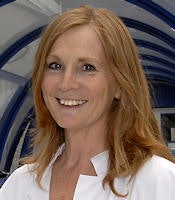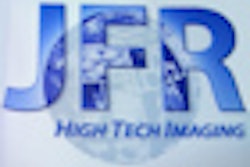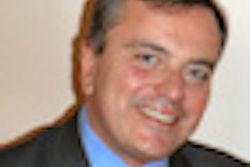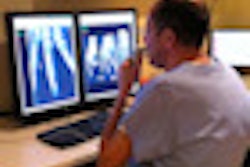
Click here for the French translation of this article.
Radiology has long since been termed a "medico-technical" profession by those inside and outside its sphere in France. The organizers of the 59th Journées Françaises de Radiologie (JFR), however, are placing human relationships high on the agenda at this year's national congress, which will welcome about 18,000 participants to the Palais des Congrès in Paris between 21 and 25 October.
 Better communication with patients results in better care, according to Dr. Sylvia Neuenschwander, president of the SFR.
Better communication with patients results in better care, according to Dr. Sylvia Neuenschwander, president of the SFR.
"2011 is 'the year of the patient' according to the French government, but for us this should be every year," said Dr. Sylvia Neuenschwander, president of the French Society of Radiology (La Société Française de Radiologie [SFR]) and head of imaging at the Curie Institute in Paris. "Although the aim of any national congress is to display technical innovation, this year there will be as much focus on patient comfort and well-being. The radiologist is a doctor, with an important medical role, as much as a technical one."
In a break with tradition, the JFR has for the first time extended its invitation to patient associations in neurology, stroke, and oncology to participate in dedicated sessions, such as the Antoine Béclère lecture on Sunday, 23 October, to be presented by the president of France's social, economic, and environmental council, Jean-Paul Delevoye. Political and national issues will be as much at the heart of debate as medical issues; for instance, a patient in Germany is three times more likely to benefit from an MRI than a French patient, owing to differing government health policies, according to the SFR.
"The 2005 guide to best imaging practice is currently being updated, but we are still having problems applying the original recommendations for avoiding ionizing radiation whenever possible because of the lack of MR equipment in France," said Neuenschwander, adding that radiation safety will be under the spotlight during the congress, as will attention to patient anxiety, pain, waiting conditions, and informative communication.
New to JFR will be a day dedicated to international radiology with all sessions in English and simultaneous translation in French. Neuenschwander welcomes the initiative and believes future JFRs may have even more international participation.
"We want to attract more radiologists from European states so that we continue to share our different experiences of care organization and our technical and scientific expertise," she said.
This year's focus is on Asia, and the session put together through cooperation between French and Chinese colleagues will cover the current status of interventional radiology in China and reveal research on acupuncture through functional MRI studies. In addition, the SFR has provided grants for 10 young doctors from different parts of the world to attend JFR.
Neuenschwander affirmed that the congress will retain its strong French identity and remain dedicated to French practice, as well as its relationship with French-speaking colleagues from Mediterranean countries and Africa who have participated in JFR's scientific sessions for many years. The SFR has highlighted the need for France to catch up with other European countries, and has earmarked Tuesday for sessions on healthcare informatics in medical imaging and technical innovation. The day is aimed at managers, engineers, and members of the public, as well as radiologists. Besides an update on the future strategy of France's "filmless regions" project, delegates will also hear about the importance of -- and the remaining challenges to -- deployment of such information systems for optimizing patient care.
Being responsible for liaison between system users and the Curie Institute's IT department for issues pertaining to patient records and PACS, Neuenschwander has a keen interest in this session. She found it difficult to choose other personal "must-sees" from the many varied clinical sessions offered, but listed the categorical course on women's imaging, focusing on gynecological and breast imaging and featuring a published syllabus, as one of her top 10 choices.
In what has at times been seen by other European countries as a rather patriarchal society, France now boasts a reasonable percentage of female radiologists. At the last count, 31% of the country's radiologists were women, and this figure has risen to 50% in the public sector. Female society presidents, however, are still in relatively short supply.
"With the feminizing of the profession, it's probably not such a big deal having a female president, but having women on the board or in posts where decisions are made, really makes a difference," Neuenschwander said. "I think we are more down-to-earth, less political, and want simple plans with concrete results -- fast!"



















